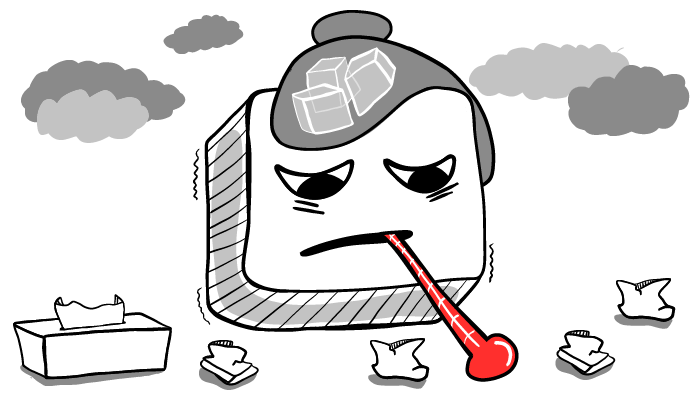Faiza was a 40-year-old professional with an illustrious career when she collapsed on a Monday morning with a stroke. She had talked to her partner for months of feeling excessive work pressure, and had just booked that long-awaited holiday after noting her continual migraines and nausea.
Faiza had achieved so much in the five years she had been with the company. She had attained the success that she had strived for her whole life, yet in recent months had felt disillusioned with her role for this high-profile tech company. She felt anguish that many of her colleagues were now leaving; her manager seemed to be uninterested in her concerns, making little time for her, complaining mostly about how busy he was with the recent legal case the company was ‘having to’ respond to.
Faiza was aware of the impact stress could have on health, and had tried to make changes; attending the company's onsite mindfulness and yoga sessions in the relaxation room and eating healthier foods in the newly refurbished onsite vegan restaurant. However, this would not reduce her workload which was now seeing her regularly working a 65-hour week. This could not change how tired she always felt at weekends, or how she did not see friends and family, nor the constant conflict at home with her partner. Neither would it remove her feelings of uncertainty around her own role and her team’s constant ‘filling in’, for six months now, for two vacant managerial roles—an issue, in turn, down to the company's difficulties with attracting new talent. It would not solve the mystery of why she had been waiting months for training on a new technology she and her team desperately needed.
In fact, 12 months ago, Faiza had actually wanted to request a 4-day work week after reading her organisation’s policy on flexible working, but she could not find any time to fill out detailed forms or discuss it directly with her manager. She didn’t want to add to his heavy workload and was not in any case optimistic regarding his response. In fact, now that she thought about it, he had stopped their one to one meetings altogether, so how would he even know about this? Yet, the lack of autonomy she felt in her role always loomed large, what with her manager’s almost hourly requests for updates on every action she wanted to take.
The above scenario is sadly all too common, albeit the consequences being less visible for some than I have presented here. In my experience working with organisations for over twenty years as a psychologist, I believe the majority of people within the workplace, no matter what job they are employed to do or at what level, start out wanting to do that job to the best of their ability. Yet often the organisational system they are in can erode their performance potential. All too often the organisation will focus on surface level employee wellbeing initiatives without being prepared to take a cultural deep dive into the organisational system.
Psychologists know that high-achieving professionals such as Faiza, will often self-report a significant number of behaviours and thoughts associated with the personality domain of ‘Conscientiousness’. They will feel an obligation to deliver on expected results in spite of obstacles, possibly self-sacrificing their own needs. They will set ambitious goals for themselves, want to deliver to very high standards, and be driven and highly achievement oriented. This will be a well-trodden path for them, applying to many aspects of their lives, but these traits that work as strengths in good times can only work well for so long if they exist within an organisation that is itself sick and unwell. This is the reason we see so many exceptionally talented ‘high achievers’ burn out, leading to a situation in which they can physically no longer work even if they desperately want to.
Organisations can run into the danger of only valuing employee’s mental and physical health at a surface level, maybe offering various benefits such as those in Faiza’s company. This is not to diminish the positive impact such benefits do offer to individuals, but rather to emphasise that they need to operate within a healthy organisational system to be truly helpful. If the system itself is not also regularly reviewed—addressing less effective cultural habits, how work is distributed, uncomfortable truths and bad practices—it is likely that the organisation could become unwell, leading to the people within suffering the ripple effects of this sickness. But how often should leaders do a deep dive into the organisation's culture to ascertain where potential signs of sickness may be?
I propose five core questions that organisations could and should ask themselves to help answer this question.
Do we have any symptoms of a sick organisation?
The obvious starting point is if there is a sudden increase in people wanting to move on. Most workplaces will have a natural ebb and flow of joiners and leavers, however when leaver numbers become excessive and way beyond what is typical, then it should be investigated as a potential symptom of ill health. It is worth noting though that a very low churn can also be symptomatic of organisational sickness, due to a sense of ‘learnt helplessness’ and feeling deskilled.
It is important to monitor not just the volume but also the type of individuals leaving. Since it is generally easier for top performers to move to new roles elsewhere than it is for other employees, if your organisation has low overall attrition but sees top performers departing, then this may be an early warning sign that all is not well, and certainly should be seen as cause for concern.
Focus on ascertaining whether this symptom was temporary due to some recent organisational changes, or an external factor like the spike of leavers many organisations saw after the peak of the Covid pandemic. If the attrition rate remains consistently high, then is there a deeper, more serious cause that will require urgent attention?
What is critical here is not only that accurate information regarding reasons for departures is being recorded, but also that common group patterns / themes from the exit data are discussed and addressed openly by leaders.
Within Container Solutions we ask our leavers to complete a short questionnaire followed by a face to face confidential / anonymous exit interview with one of our people team; themes are analysed across departmental groups only as the emphasis is on anonymity and confidentiality.
We cover areas such as:
- Main reasons for leaving
- What we could have done differently to encourage them to stay longer
- How much they felt they were listened to throughout their time in CS
- How they perceived direct manager effectiveness
- What was highlight and what was most challenging experiences
- How would they describe the culture of the company right now
- Any other areas they wish to confidentially and anonymously talk about
Transparency within the organisation regarding high leaver numbers may be uncomfortable for leaders to talk about openly, but doing so will aid with the road to better health for the remaining workgroups. Leaders showing an awareness of the potential impact on those who remain, and openly discussing how high attrition is being addressed, is a very good starting point to better health.
Critically, healthy organisations will consider the importance of the exit experience not only from their data gathering perspective, but also from that of the person who is departing. Many leavers will have formed close working relationships, and been part of teams that they speak to regularly if not every day. I have observed much sadness from leavers in exit interviews I have conducted personally, who repeatedly express to me tearfully how it ‘feels like a break up’. A healthy organisation will allow people the opportunity to talk through these feelings in a face-to-face exit interview.
The approach organisations take when an exit is not a choice the employee has made themselves is also revealing. For example when redundancies need to occur, a healthy organisation will give careful consideration to the steps needed for what is a difficult transition. Recent inhumane examples of very unwell organisations demonstrate behaviours from dysfunctional senior leaders, revealing alarming levels of disconnect between organisational actions and their impact on the individual
Current employees also need to be able to provide open and honest feedback to each other within the system they inhabit. How does the organisation support the flow of these conversations? Do they have well designed 360° feedback approaches as standard, which are trusted and regularly offered throughout the year including for board members? A sick organisation is unlikely to prioritise a formal approach to enabling employees to carefully communicate perceptions of each other's performance. Or they may have poorly designed 360 measures which may even exclude senior leaders from participating.
Consider how the organisation is viewed by customers, users and clients. If it is becoming sick then this will eventually filter into what the end-user experiences. How is this information being collected and addressed? Has the organisation repeatedly been given feedback about being over-charged, delivery times, low quality products, administrative errors, ethical conduct etc.? When feedback is offered, how does the organisation respond? A sick organisation may not have the inclination or ability to respond at all, or to even be able to grasp how such perceptions can be held if this is very different to the view they hold of themselves. They may offer a response that shows disregard for the customer, client or end user’s experience, perceptions and feelings.
These are all signs that the organisation is sick or is becoming very unwell, but as described there are many ways to begin to reduce chronic sickness. Other potential observations may come from job applicants who have interacted with the company. What feedback do they offer regularly? What did their interaction with the system tell them about the way the organisation is? Were they left with concerns that something was wrong?
Do we meet the basic needs of our people?
An organisation that is unwell will have little energy to focus on an employee’s basic needs to allow them to manage their lives outside of work as well as in it. Here basic needs include time away from the workplace through paid time off, flexible work patterns, training and development engagement, a fair and equitable pay structure, and a safe physical work environment.
A sick organisation would not have the energy to consider the employee out of their immediate role and responsibilities. There may be the sense that the individual should be available to service the needs of the unwell organisation 24/7. More crisis situations will occur as the organisation becomes less healthy, with time away from the demands of the organisation being viewed with increasing hostility by managers, leaders and potentially even co-workers.
Another central basic need is remuneration and benefits packages. Are employees paid the salary aligned to their internal and external peers in similar roles and locations? Or as my previous question states, does the employee’s pay enable them to manage their lives outside of work? One has to really question the mindset of an employer who knowingly observes food banks being set up on work premises as their staff cannot afford to buy food due to their low level of pay; this is the harsh reality at the time of writing for many UK health workers and nurses.
Employee benefits become more extensive as an organisation grows and matures, but are the benefits staff receive aligned to similar competitor organisations and reasonable for the stage the organisation is currently at? A healthy organisation will have considered this very carefully, with transparent, fair and equitable systems in place for new hires and existing employees. Promotions will be based on competence not nepotism, with transparent processes operating. Sick organisations will not have the energy or inclination for this, leading to huge inequalities in pay internally likely including significant gender pay gaps, struggles with attracting new talent, and continually high attrition rates.
How much care and attention has the organisation given to the environment in which employees work? Is there good financial support for creating healthy working from home environments? For office-based teams, how much care has been taken in their physical office space? Providing a safe and humane working environment is an absolute basic need which is met by healthy organisations. Often, a sick organisation will reveal their health through dangerous or unfit physical workplace environments that they consider suitable for their employees.
Healthy companies invest in spaces, whether through work from home allowances or physical workplaces that have been carefully considered to meet current and future staff needs. They consider teams of remote vs office employees, neurotypical vs neurodivergent workers, disabled vs non-disabled employees, and so on.
We have seen a surge in creatively designed workplaces offering reflective / relaxation spaces for employees, recreational and exercise areas, and focus on healthy foods / snacks being made available. We have seen an increase in thought given to employee centric ergonomically designed offices, with careful choices around lighting, textures and colour. As we move past recent pandemic years and more people return to physical workspaces in a hybrid pattern, it is likely that healthy organisations will focus even more investment on this basic need, with equality between remote and office-based workers.
Do we give our people what they need to function effectively day to day?
Every job a person is expected to do will require a set of tools and resources to work effectively and efficiently. When these tools are broken or not even provided, the strain on the employees can be profound. Healthy organisations prioritise the tools people need to work in their chosen profession. Hybrid workers should be able to access the same quality of ergonomically-suitable office furniture as their non-remote working colleagues. Requests for appropriate office setups are actioned by the healthy organisation which sees the physical health of their employees as a priority. A sick organisation will try desperately to cut corners in this regard, expecting employees to continually ‘make do and mend’, with little regard for the impact on a person's daily life.
Do the people within the organisation know what ‘healthy’ looks like?
As an organisation deteriorates into ill health, leaders within the organisation may fail to address their own performance and become less accountable. They may not apply the same standards of behaviour they hold for others to themselves. This can also then cascade down the organisation, as poor role models have a demotivating impact at each successive organisational level. High-potential employees may feel frustrated at not seeing expected leadership behaviours, which in turn leads to disengagement and low performance.
Is the organisation feeling toxic?
Similarly to the previous question, as we fail to see a lack of good role modelling in the sick organisation, we may see an increase in unethical and highly toxic behaviour. Unhealthy habits can become the norm and slowly the sick organisation forgets about the importance of looking after its own health. Misaligned values between leaders and followers may be felt, which we know can be a significant cause of burnout for many. Toxic behaviours quickly embed within the system, taking root, and become harder to address the longer they continue.
Regular candid feedback upwards to senior leadership is therefore critical to the healthy organisation with an emphasis on psychological safety, so that people feel safe to take interpersonal risks and share their views without fear of repercussions. Likewise, a significant focus on what is expected of the leaders is set as a priority, with a shared understanding from everyone, and regular opportunities to communicate collaboratively from all perspectives within the organisation.
Not just lip service
It has become commonplace for organisations to talk about health and wellbeing at work. But if leaders and organisations are to continue doing so, highlighting the value they place on caring and supporting employees, then it is only fair that they take a deep dive into the systems which underpin how they expect people to operate day-to-day. For many there can be an enormous gulf between some well-intentioned initiatives and how people are expected to perform their roles and responsibilities in reality. Similarly, it is appropriate for employees to understand what should be considered as basic needs and what maybe are not.
With the volatile and uncertain world many organisations now inhabit, some of the areas highlighted may feel daunting for leaders to contemplate; but not to address any of these factors is akin to having a band-aid cover a large gaping wound. There is no guarantee that the wound will ever heal and if it does the memories of the pain may never disappear.



 Previous article
Previous article
